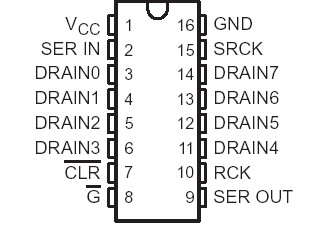TPIC6C596: Features: Low rDS(on) . . . 7 TypAvalanche Energy . . . 30 mJEight Power DMOS Transistor Outputs of 100-mA Continuous Current250-mA Current Limit CapabilityESD Protection . . . 2500 VOutput Clamp V...
floor Price/Ceiling Price
- Part Number:
- TPIC6C596
- Supply Ability:
- 5000
Price Break
- Qty
- 1~5000
- Unit Price
- Negotiable
- Processing time
- 15 Days
SeekIC Buyer Protection PLUS - newly updated for 2013!
- Escrow Protection.
- Guaranteed refunds.
- Secure payments.
- Learn more >>
Month Sales
268 Transactions
Payment Methods
All payment methods are secure and covered by SeekIC Buyer Protection PLUS.

 TPIC6C596 Data Sheet
TPIC6C596 Data Sheet








